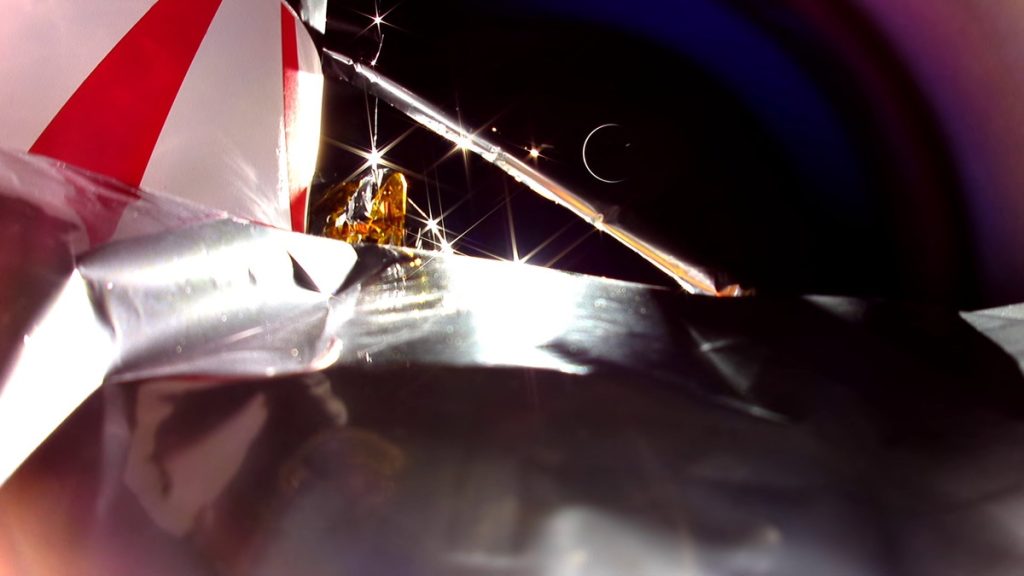THE WOODLANDS, Texas — Despite not being able to land on the moon, NASA and other organizations that had experiments on Astrobotic’s Peregrine lunar lander say they still gained valuable information from the mission.
Peregrine was launched on Jan. 8 as part of the inaugural flight of United Launch Alliance’s Vulcan Centaur. However, the spacecraft experienced a propellant leak hours after launch, eliminating the possibility of attempting a lunar landing. The spacecraft instead reentered the atmosphere a week and a half after launch.
Despite not reaching the moon, many of the experiments onboard Peregrine were tested during the journey. Dan Hendrickson, vice president of Astrobotic, mentioned during a March 11 session at the Lunar and Planetary Sciences Conference that, “In transit, we were going to keep most of those experiments in a survival mode. But as our mission changed, the plan changed as well, benefiting all the experiments.”
While many of the scientific experiments on Peregrine were unable to gather their intended data from the lunar surface, they were able to be tested in space and, in some cases, conduct scientific research.
One of these was the Linear Energy Transfer Spectrometer (LETS) instrument, which collected data about the radiation environment near the moon rather than on the lunar surface as originally planned. “We had to adjust our operations to retrieve data during the journey,” said Stuart George of NASA’s Johnson Space Center, a key figure in the instrument's development. “The instrument worked perfectly throughout the mission.”
Another NASA instrument, the Peregrine Ion-Trap Mass Spectrometer (PITMS), was also able to function during the journey, detecting traces of nitric oxide and nitrogen dioxide likely from the leaked oxidizer of the lander. “That temporary atmosphere, created by the oxidizer around the spacecraft, persisted,” said Barbara Cohen, principal investigator for PITMS at NASA’s Goddard Space Flight Center.
One of the non-NASA experiments on Peregrine was Iris, a lunar rover created by students at Carnegie Mellon University. “We transformed into a ‘RoverSat’ instead,” said Raewyn Duvall, program manager for Iris. This involved testing many of the rover’s subsystems and even rotating some of its wheels to confirm their functionality. “Everything we were permitted to test worked as expected.”
Astrobotic is currently evaluating the Peregrine mission to identify the main cause of the propellant leak and any adjustments that might be necessary for the company’s larger Griffin lander, which is being developed for the launch of NASA’s Volatiles Investigating Polar Exploration Rover (VIPER) mission. Hendrickson mentioned after the presentation that the investigation was progressing well, but did not provide a timeline for its completion.
NASA is monitoring that investigation, according to Joel Kearns, deputy associate administrator for exploration in NASA’s Science Mission Directorate, during a NASA town hall at the conference on March 11. “Once we have the results, NASA will decide on the actions we will take in the future,” he stated, including any specific changes for VIPER. “We will review their failure review board findings and determine the necessary steps for VIPER.”
Griffin and VIPER were scheduled to launch in November, but Kearns, speaking at a meeting on March 5, stated that this is likely to be delayed. He said it is very unlikely that they will fly before the end of this year, due to the Peregrine investigation and other work needed to prepare the rover and lander for launch. He mentioned that NASA will wait to set a new date until after the Peregrine investigation is complete.









